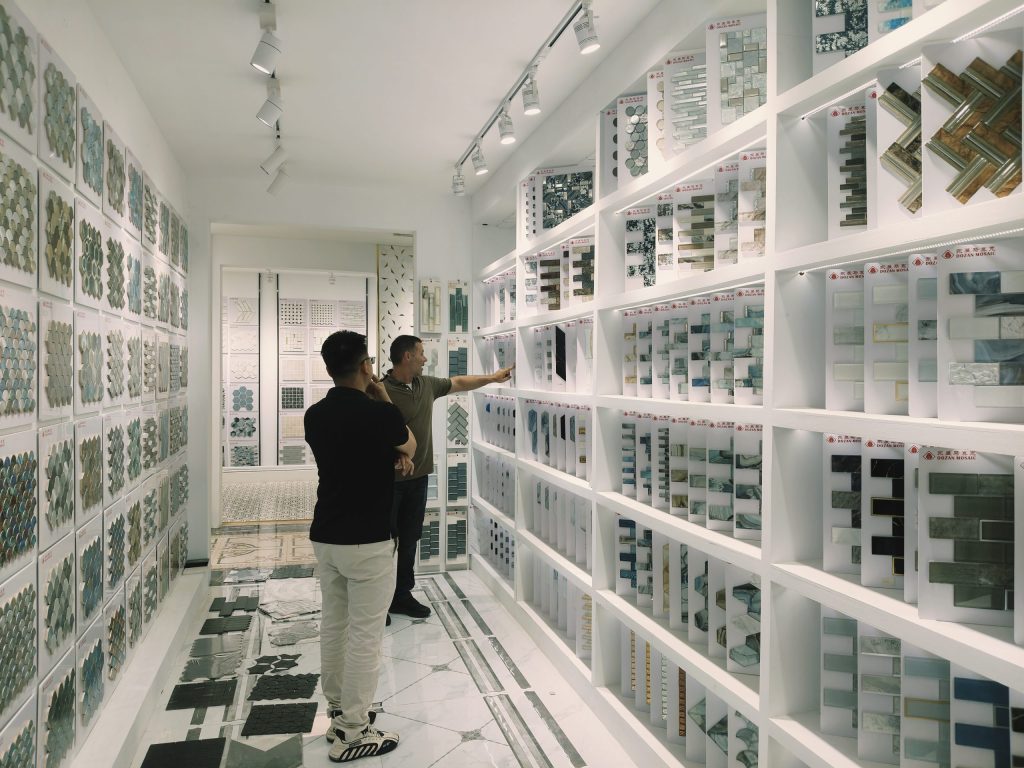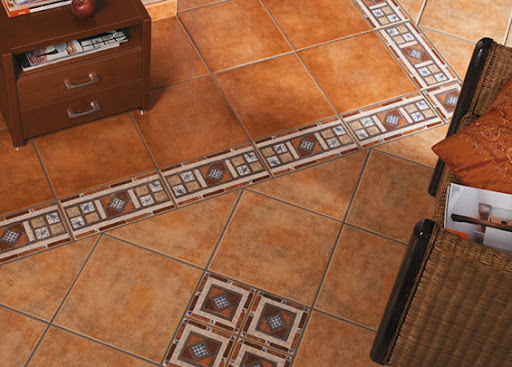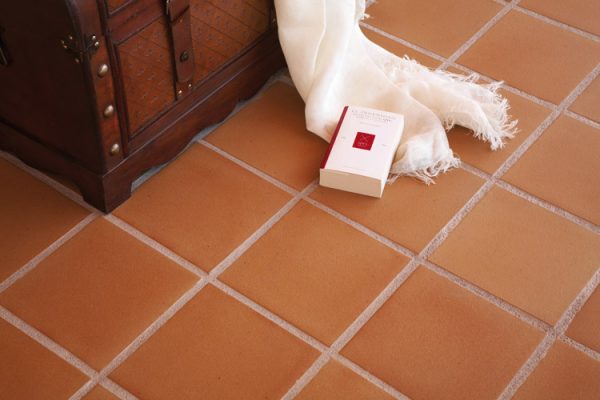Which is better, Clay Bricks or Ceramic Tiles
Material Properties: The Water Absorption Rate Divide
(1) Water Absorption Rate: The Lifeline of Clay Bricks and Ceramic Tiles
Clay bricks have a water absorption rate exceeding 10%, while ceramic tiles are bΩelow 0.5%. This critical difference determines their applications:
- Clay Bricks: Porous structure with capillary action for drainage, ideal for humid environments (e.g., exterior walls, courtyards).
- Ceramic Tiles: Dense, glass-like surface with minimal water penetration, perfect for high-traffic areas (e.g., kitchens, bathrooms).
(2) Structural Differences: Clues in Sound
- Clay Bricks: Dull thud when tapped (density: 1.2–1.5 g/cm³), lightweight.
- Ceramic Tiles: Sharp, resonant sound (density: 2.0–2.5 g/cm³), heavy.
(3) Physical Performance
| Property | Clay Bricks | Ceramic Tiles |
|---|---|---|
| Compressive Strength | 20–30 MPa (low-load) | 35–50 MPa (high-load) |
| Abrasion Resistance | Prone to wear | Mohs hardness 6–7 |
| Slip Resistance | High (porous texture) | Low (requires texturing) |
| Thermal Conductivity | 0.8–1.2 W/m·K (cool) | 1.5–2.0 W/m·K (warm) |
Application Guidelines: Matching Material to Purpose
(1) Clay Bricks: Where Nature Meets Utility
- Exterior Walls & Roofs:
- Freeze-thaw resistance (-50°C cycles) prevents cracking.
- Permeability reduces water pooling.
- Courtyards & Pathways:
- Porous design aligns with sponge-city concepts.
- Artistic Installations:
- Rustic textures (e.g., split-face bricks) suit industrial or farmhouse styles.
(2) Ceramic Tiles: Precision in Modern Design
- Kitchen & Bathroom Floors:
- Glazed ceramic tiles resist stains and water.
- Living Rooms & Corridors:
- Large-format tiles (e.g., 1200×2400mm) minimize grout lines.
- Commercial Spaces:
- High-traffic durability (e.g., shopping malls).
(3) Hybrid Solutions
- Brick Veneer: Attach clay bricks to walls using tile adhesive (requires smooth substrate).
- Textured Tile: Mimic brick patterns on floors (e.g., terrazzo tiles).
Installation Pitfalls: 90% of Clients Overlook These

(1) Clay Brick Mistakes
- Ordinary Cement: Use tile adhesive (C2TES1 grade) for better adhesion.
- Direct Sun Exposure: Avoid 48-hour direct sunlight post-installation.
- Drainage Neglect: Ensure 1–3% slope in courtyards.
(2) Ceramic Tile Best Practices
- Thin-Layer Technique: Use notched trowels for 3–5mm adhesive layers.
- Wall-Over-Floor Rule: Install wall tiles over floor tiles to prevent water ingress.
- Grouting Choices: Epoxy grout for tiles, standard for bricks.
(3) Cost Comparison (10㎡ Example)
| Item | Clay Bricks (Textured) | Ceramic Tiles (Polished) |
|---|---|---|
| Material Cost | ¥80–120/㎡ | ¥150–250/㎡ |
| Labor Cost | ¥50–80/㎡ | ¥40–60/㎡ |
| Maintenance | ¥5–10/㎡/year | ¥2–5/㎡/year |
| Total | ¥130–200/㎡ | ¥190–310/㎡ |
Quality Checks: Spotting Substandard Products
(1) Section Inspection
- Clay Bricks: Rough, uneven texture with iron oxide streaks.
- Ceramic Tiles: Dense, uniform color.
(2) Water Test
- Clay Bricks: Absorbs water within 30 seconds.
- Ceramic Tiles: Water beads roll off.
(3) Weight Comparison
Ceramic tiles are 30–50% heavier than clay bricks of the same size.
Future Trends: Innovation on Both Fronts
(1) Clay Brick Advancements
- Nano-Coatings: Hydrophobic treatments (e.g., Hydrogard by Keraben).
- Heated Bricks: Carbon fiber heating layers for cold climates.
(2) Ceramic Tile Innovations
- Zero-VOC Glazes: Plant-based formulations (e.g., corn starch).
- Solar Tiles: Integrated photovoltaics (e.g., Marazzi SolarTile).
Final Recommendation: Strategic Selection Guide
(1) Opt for Clay Bricks If…
Prioritizing Natural Aesthetics
- Rural & Rustic Designs: Clay bricks’ raw, textured appearance complements farmhouse, industrial, or Mediterranean styles. Their irregular edges and warm earth tones evoke authenticity, as seen in Tuscan villas or heritage homes .
- Historical Restorations: Ideal for preserving traditional architecture due to their compatibility with lime-based mortars and weathering resistance .
Budget-Conscious Solutions
- Cost Efficiency: While initial material costs are moderate, clay bricks reduce long-term expenses through:
- Energy Savings: High thermal mass regulates indoor temperatures, cutting HVAC costs by 15–20% .
- Recyclability: Crushed bricks can repurpose into pathways or retaining walls, minimizing waste .
Outdoor Drainage Needs
- Frost Resistance: Withstands -50°C freeze-thaw cycles without cracking, making them ideal for northern climates .
- Permeable Paving: Allows rainwater infiltration, reducing flooding risks and aligning with sustainable urban design principles .
(2) Opt for Ceramic Tiles If…
High-Traffic Zones
- Commercial & Residential Durability:
- Porcelain Tiles: Withstand 5,000+ foot traffic cycles (PEI 5+ rating) and resist scratches from heavy furniture .
- Textured Finishes: Matte or anti-slip coatings enhance safety in kitchens and entryways .
Modern Minimalist Design
- Seamless Aesthetics: Large-format tiles (e.g., 1200×2400mm) create uninterrupted visual flow, perfect for loft-style interiors .
- Material Mimicry:
- Marble-Look Ceramic: Achieves luxury aesthetics at 60% lower cost than natural stone .
- Wood-Grain Tiles: Mimic hardwood floors while resisting moisture and insects .
Long-Term Durability
- Low Maintenance: Glazed surfaces resist stains, mold, and UV fading, requiring only occasional sealing .
- Warranty Advantage: Premium ceramic tiles often come with 25+ year manufacturer warranties .

(3) Compromise Solutions
Mixed Material Zones
- Clay Brick Walls + Ceramic Tile Floors:
- Aesthetic Balance: Raw brick walls contrast elegantly with polished ceramic floors, blending rustic and modern elements .
- Functional Synergy:
- Bricks: Thermal mass stabilizes indoor climate.
- Tiles: Waterproof floors prevent moisture damage .
- Installation Tips:
- Use thinset mortar for brick veneering to ensure adhesion.
- Opt for rectified ceramic tiles for seamless grouting .
Hybrid Tiles
- Glazed Ceramic Brick Mimics:
- Design Flexibility: Tiles like Desais’ “Marble Brick” series replicate clay brick textures while offering waterproofing and stain resistance .
- Performance Upgrades:
- Nano-Glazed Surfaces: Repel water and dirt (e.g., Taolixi’s Hydrogard technology) .
- Heated Options: Integrate carbon fiber layers for frost-prone regions .
Implementation Checklist
| Factor | Clay Bricks | Ceramic Tiles |
|---|---|---|
| Budget Allocation | 30–50% upfront savings, 10% long-term ROI | 40–60% upfront, 5–10% long-term ROI |
| Installation Time | 2–3 weeks (weather-dependent) | 1–2 weeks (indoor) / 3–4 weeks (outdoor) |
| Maintenance | Quarterly sealing, annual inspection | Monthly mopping, bi-annual grout touch-up |
| Design Versatility | Rustic, industrial, traditional | Modern, minimalist, eclectic |
Case Study: Hybrid Application
A Milanese villa combined:
- Clay Brick Facade: Provided thermal insulation and a rustic charm.
- Heated Ceramic Tile Floor: Integrated underfloor heating for year-round comfort.
- Textured Tile Backsplash: Mimicked brick patterns while resisting grease in the kitchen.
Result: Energy bills reduced by 22%, and the design won a 2024 AIA Honor Award .
Final Note: Material selection should align with functional needs (durability, maintenance) and emotional values (aesthetic resonance, sustainability). Hybrid solutions exemplify how balancing these factors can achieve both practicality and elegance.
The clay vs. ceramic debate boils down to nature vs. technology. Neither is inherently better—context matters. Balance budget, aesthetics, and maintenance needs. As the industry evolves, both materials continue to innovate, offering smarter solutions for every space.
